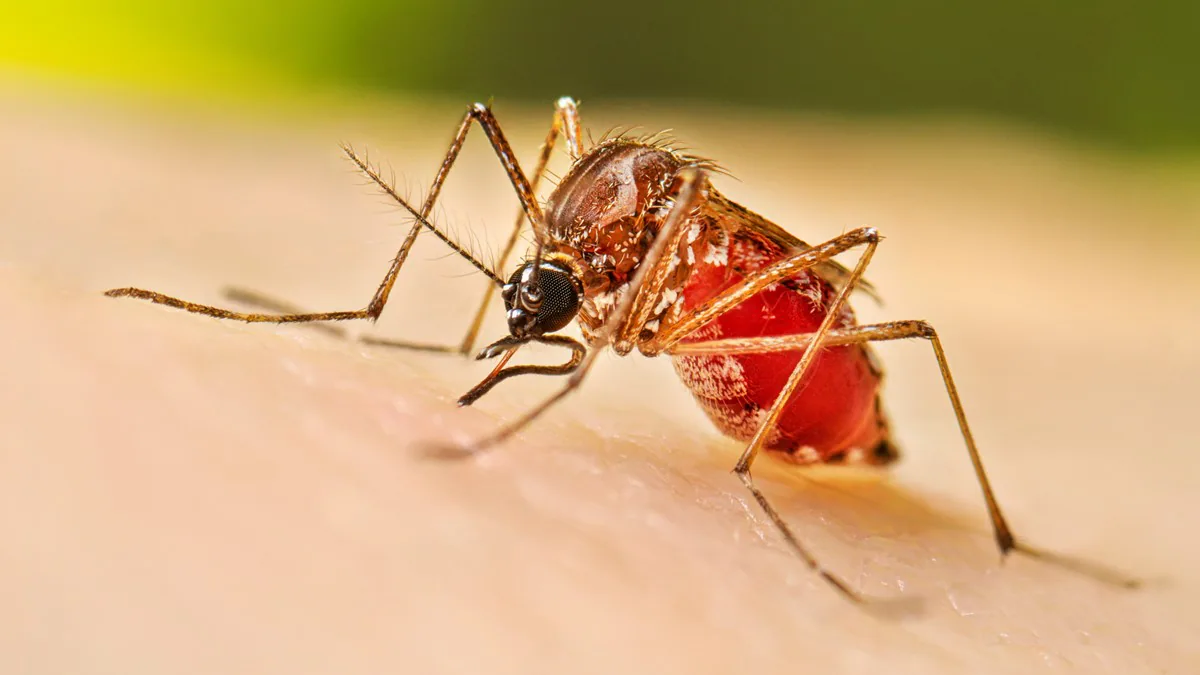A study led by climate scientists Sophia Yacob and Roxy Mathew Koll from the Indian Institute of Tropical Meteorology (IITM), Pune, has revealed an alarming link between climate change and the increasing incidence of dengue in India. Published in Nature’s Scientific Reports, the research highlights how rising temperatures, shifting monsoon patterns, and humidity are driving a surge in dengue cases and related deaths. The study found that temperatures above 27°C, moderate and evenly distributed rainfall, and humidity levels between 60% and 78% during the monsoon season (June–September) significantly increase the prevalence of dengue. However, extremely heavy rainfall exceeding 150 mm per week can flush out mosquito eggs and larvae, temporarily reducing the spread of the disease. Based on data from Pune, the research identified a lag of 2–5 months between these climatic factors and dengue outbreaks, providing critical lead time for early warnings and preventive measures. The researchers project that dengue mortality in Pune will rise by 13% between 2021 and 2040 and by 23–40% between 2041 and 2060, depending on emission scenarios. These alarming trends are driven by higher temperatures and erratic rainfall patterns, which favor mosquito breeding and the spread of vector-borne diseases. While the study focuses on Pune, the researchers caution that similar trends could occur across India.
Urgent Need for Interventions
According to the study, without timely interventions, the combination of rising temperatures and unpredictable monsoons will worsen vector-borne diseases like dengue, placing significant strain on healthcare systems. Vulnerable communities, in particular, face greater risks. “India’s rising temperatures and changing rainfall patterns will exacerbate the dengue crisis unless immediate action is taken,” said Dr. Koll. The paper also highlights that the dengue burden in India may be grossly underestimated. One study suggests that actual cases could be up to 282 times higher than reported figures. Effective early warning systems are critical to mitigating outbreaks, but they rely heavily on accurate and comprehensive health data. Dr. Koll emphasized the importance of collaboration between state health departments and meteorologists to develop tailored early warning systems for climate-sensitive diseases such as dengue, malaria, and chikungunya. Pune’s health department provided the necessary data for this study, enabling scientists to create a model for early warning systems. However, efforts to obtain similar data from other high-burden states like Kerala were unsuccessful due to a lack of cooperation. “Without health data, it is challenging to develop precise models for disease prediction,” Dr. Koll explained. “Collaboration between scientists, health departments, and governments is essential for addressing climate-health challenges.”
States Most at Risk
States such as Kerala, Maharashtra, Karnataka, Tamil Nadu, West Bengal, Gujarat, Rajasthan, Punjab, Haryana, Andhra Pradesh, Telangana, and Uttar Pradesh bear a significant dengue burden and stand to benefit from advanced early warning systems. These systems can improve preparedness, reduce disease impact, and save lives. Sujata Saunik, Chief Secretary of Maharashtra, stressed the importance of multi-disciplinary collaboration to tackle such challenges. “This is a perfect example of how scientists, health departments, and governments can work together to enhance health warning systems,” she said. Raghu Murtugudde, a climate scientist from the University of Maryland and co-author of the study, highlighted the importance of making decisions based on available data. “Health applications are the most stringent tests for weather and climate predictions. We must use the data we have to demonstrate what is possible and identify gaps for future improvements,” he stated. As temperatures and humidity rise further and monsoon patterns become more erratic, the study underscores the urgent need for targeted interventions to combat the growing dengue crisis in India.
